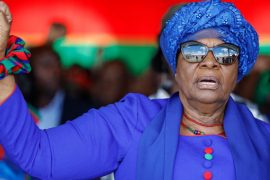By: Bhanupriya Rao
While the global average for Women in Parliament stands at 22.4%, India is at the 103rd place out of 140 countries with a mere 12% representation. Within Asia, India is at the 13th position out of 18 countries. Countries like South Sudan, Saudi Arabia have better Women representation in Parliament than India.
Women’s representation in elected bodies, Lok Sabha and state legislative assemblies is a source of huge disappointment. As we observed in a previous article, women occupy just 66 seats in the 543 member Lok Sabha, which is a mere 12%. The scenario for women Members of Legislative Assemblies (MLAs) across all state assemblies in India is even worse, with the national average being a pitiable 9%. The best among them, Bihar, Rajasthan and Haryana have 14% representation while the worst states are Pondicherry and Nagaland, which have no women MLAs at all.
This being the dismal scenario, we were curious to see how India held up against the rest of the world in women’s representation. We looked at data on women in national parliaments (directly elected lower Houses) across the world from the Inter Parliamentary Union, an international organization of Parliaments, to situate India’s position on this yardstick. The findings, while busting popular myths about many countries, also show us the mirror on how far we lag behind in giving women the level playing field to be part of the political decision making process and why we need to do more to improve the situation.
It is encouraging to find some countries with a fantastic number of women MPs making up their Parliament. 13 countries in the world constitute, what can be aptly called the ‘40 percent group’ i.e women constitute 40% or more of the total seats in the National Parliament. Topping this group is Rwanda, where women MPs make up for 63.8% of the Parliament, outnumbering the men. Bolivia at 53% and Andorra at 50% achieve gender parity with equal number of men and women MPs. Another interesting aspect to note is that an overwhelming number of the countries that constitute this group are from Africa, followed by Europe and South America.
The global average for women in parliaments stood at 22.4%. While Europe surpasses the global average at 25.2%, Sub-Saharan Africa has an average representation of 22.6%, Asia at 19% and the Arab states at 18%. The Nordic countries alone have 41.5% average of women MPs. 42 countries in the world have 30% or more women MPs in their Parliament.
So where does India figure in the world rankings? Way down at 103 among the 141 ranks listed for 190 countries that we have data for. That is hardly a position to be proud of!
But wait! The shocker comes in the form of surprise countries that figure way up in the rankings table. Algeria at 27th (31.6%), Iraq and South Sudan at 44th (26.5%) each, Saudi Arabia at 69th (19.9%) are some of the countries that beat India with considerable margin, where women MPs are concerned. Even Libya at 44th with 16% women stands way above India. The other surprising aspect is that the U.S. ranks a tad below Saudi Arabia with only 19.3% in its House of Representatives. These figures and rankings are surprising because these countries are either strife-driven, emerging from conflict or have severe restrictions posed on women in their societies. Yet, they fare much better in the spaces that women occupy in political decision making.
Even among the Asian countries [none of which figure in the top 20], India’s position is nothing to write home about. Out of the 18 countries that we have data for, India’s position is a dismal 13th, with countries like the Philippines (27.2%), Vietnam (24.3%) and Cambodia (20.3%) doing much better. Japan is a surprise laggard with only 9.5% of women MPs in its Diet.
Disappointed by the grimness, we decided to zoom in further and look closer home in the South Asia region. Surely, India stands tall here, given its leadership and usually better record of democracy in the SAARC region? Turns out, no. Of the 8 SAARC countries, India’s position is an ignominious 5th. Nepal with 29.5% women leads the SAARC group, followed by Afghanistan with 27.7% MPs. Pakistan and Bangladesh at 20% each; ensure much better representation for women in their parliament. There is some catching up to do for India within the region to ensure gender equity in the highest elected body of the country.
When SAARC offered no solace, we decided to look at the BRICS countries and India’s position therein. BRICS is the emerging power pack of Brazil, Russia, India, China, and South Africa. India here stands 4th among these countries, toping Brazil with a mere 9% women that fares worse than us. South Africa, which is among the top ten countries in the world in terms of the number of women MPs, could perhaps offer some valuable lessons to the rest in the group.
As these surprising findings on women MPs unfold before us, we are led to question as to why some of these countries have much higher women MPs than the others. What are they doing right? What spaces are they creating and what special incentives are being offered to create the level playing field for women to not just participate in politics but also to see themselves through the threshold of political decision making bodies? One of the most important provisions that almost all the countries with better women’s representation have ensured is to create constitutionally mandated quotas or reservation for women. Rwanda has 30% reservation for women as do most of the countries in the top 20. Closer home Nepal has 29% legislated quota for women, Afghanistan has 28%, Pakistan and Bangladesh have 20% seats reserved for women. Some European countries have voluntary political party quotas that encourage and ensure women’s participation in the political process.
Rwanda is a fantastic case study of how to do things right to get more women to the parliament. While it has 30% reservation for women at the Parliament, there is active participation of women at all levels right down to the grassroots. There is also special encouragement from the political leadership, starting from president Paul Kagame that has translated into women breaching the 30% quota limit and making up for almost 64% of the national Parliament. That is a heart-warming record for a country that is reconstructing itself post genocide. Indian lawmakers and political establishment could learn valuable lessons from Rwanda and take steps to correct the historical wrongs.
Source: factly.in




